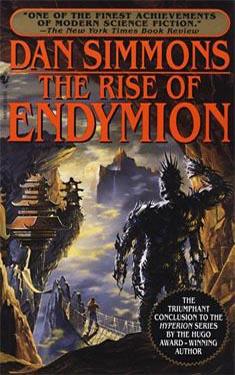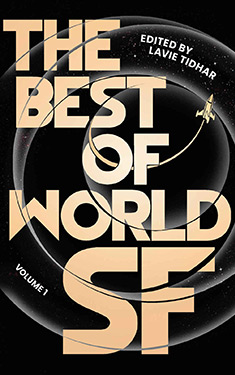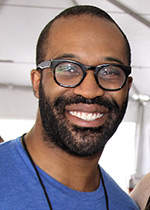
Added By: Administrator
Last Updated: Administrator
The Rise of Endymion
| Author: | Dan Simmons |
| Publisher: |
Bantam Spectra, 1997 |
| Series: | The Hyperion Cantos: Book 4 |
|
1. Hyperion |
|
| Book Type: | Novel |
| Genre: | Science-Fiction |
| Sub-Genre Tags: | Galactic Empire Artificial Intelligence Hard SF |
| Awards: | |
| Lists: | |
| Links: |
|
| Avg Member Rating: |
|
|
|
|
Synopsis
In The Rise of Endymion, Dan Simmons brings to a triumphant conclusion one of the most celebrated, compelling, and dramatic science fiction sagas of our time. Brilliant, provocative, unfailingly inventive, the odyssey began with the Hugo Award-winning Hyperion, continued through the critically acclaimed The Fall of Hyperion and Endymion, and now ascends to its greatest heights yet....
The final chapter of this magnificent saga begins with two momentous events: the death and resurrection of Pope Julius XV and the coming-of-age of the new messiah. Her name is Aenea and she is the only person who can counter the pope and his plan to unleash the Pax Fleet, the Church's military wing, on a final genocidal Crusade to gain total dominion over the universe. The Church is allied with the infamous AI Core, which has offered immortality to humankind--or at least to those faithful who pledge total obedience to the Church--but at what terrible price? The Core has its own dark motives and secrets, and only Aenea knows what they are.
Aenea, too, has an ally. Her protector, Raul Endymion, onetime shepherd and convicted murderer, finds her in exile undergoing a strange apprenticeship on Old Earth. Here she has gained access to an information matrix created by the Others--the same mysterious Others who moved Old Earth to save it from the Core. But who are these Others? What has Aenea learned from them? And why has Old Earth been turned into a stage upon which cybrids from the past--from John Keats to Frank Lloyd Wright--repeat historical dramas of human genius for purposes known only to the Others?
The answers to these questions must wait. Together with the android A. Bettik, Endymion and his beloved Aenea embark on a final mission to find and comprehend the underlying fabric of the universe. The surprising nature of this medium and Aenea's ability to instruct her growing army of disciples in its discovery and use could provide the one weapon powerful enough to thwart their enemies while liberating humanity. Meanwhile, the enigmatic Shrike--monster, angel, killing machine--has followed them on their intergalactic sojourn and now stands ready to complete its own mission, revealing at last the long-held secret of its origin and purpose.
In The Rise of Endymion, Dan Simmons masterfully weaves together the complex strands of this extraordinary series. He answers all of the unsolved mysteries posed in the earlier volumes and brings the story full circle to the planet Hyperion, where it all began. A work of unparalleled power and vision, The Rise of Endymion is a masterpiece of the imagination by one of our most gifted writers.
Excerpt
"The Pope is dead! Long live the Pope!"
The cry reverberated in and around the Vatican courtyard of San Damaso where the body of Pope Julius XIV had just been discovered in his papal apartments. The Holy Father had died in his sleep. Within minutes the word spread through the mismatched cluster of buildings still referred to as the Vatican Palace, and then moved out through the Vatican State with the speed of a circuit fire in a pure-oxygen environment. The rumor of the Pope's death burned through the Vatican's office complex, leaped through the crowded St. Anne's Gate to the Apostolic Palace and the adjacent Government Palace, found waiting ears among the faithful in the sacristy of St. Peter's Basilica to the point that the archbishop saying Mass actually turned to look over his shoulder at the unprecedented hiss and whispering of the congregation, and then moved out of the Basilica with the departing worshipers into the larger crowds of St. Peter's Square where eighty to a hundred thousand tourists and visiting Pax functionaries received the rumor like a critical mass of plutonium being slammed inward to full fission.
Once out through the main vehicle gate of the Arch of Bells, the news accelerated to the speed of electrons, then leaped to the speed of light, and finally hurtled out and away from the planet Pacem at Hawking-drive velocities thousands of times faster than light. Closer, just beyond the ancient walls of the Vatican, phones and comlogs chimed throughout the hulking, sweating Castel Sant'Angelo where the offices of the Holy Office of the Inquisition were buried deep in the mountain of stone originally built to be Hadrian's mausoleum. All that morning there was the rattle of beads and rustle of starched cassocks as Vatican functionaries rushed back to their offices to monitor their encrypted net lines and to wait for memos from above. Personal communicators rang, chimed, and vibrated in the uniforms and implants of thousands of Pax administrators, military commanders, politicians, and Mercantilus officials. Within thirty minutes of the discovery of the Pope's lifeless body, news organizations around the world of Pacem were cued to the story: they readied their robotic holocams, brought their full panoply of in-system relay sats on-line, sent their best human reporters to the Vatican press office, and waited. In an interstellar society where the Church ruled all but absolutely, news awaited not only independent confirmation but official permission to exist.
Two hours and ten minutes after the discovery of Pope Julius XIV's body, the Church confirmed his death via an announcement through the office of the Vatican Secretary of State, Cardinal Lourdusamy. Within seconds, the recorded announcement was tightcast to every radio and holovision on the teeming world of Pacem. With its population of one and a half billion souls, all born-again Christians carrying the cruciform, most employed by the Vatican or the huge civilian, military, or mercantile bureaucracy of the Pax state, the planet Pacem paused to listen with some interest. Even before the formal announcement, a dozen of the new archangel-class starships had left their orbital bases and translated across the small human sphere of the galaxy arm, their near-instantaneous drives instantly killing their crews but carrying their message of the Pope's death secure in computers and coded transponders for the sixty-some most important archdiocese worlds and star systems. These archangel courier ships would carry a few of the voting cardinals back to Pacem in time for the election, but most of the electors would choose to remain on their homeworlds--foregoing death even with its sure promise of resurrection--sending instead their encrypted, interactive holo wafers with their eligo for the next Supreme Pontiff.
Another eighty-five Hawking-class Pax ships, mostly high-acceleration torchships, made ready to spin up to relativistic velocities and then into jump configurations, their voyage time to be measured in days to months, their relative time-debt ranging from weeks to years. These ships would wait in Pacem space the fifteen to twenty standard days until the election of the new Pope and then bring the word to the 130-some less critical Pax systems where archbishops tended to billions more of the faithful. Those archdiocese worlds, in turn, would be charged with sending the word of the Pope's death, resurrection, and reelection on to lesser systems, distant worlds, and to the myriad colonies in the Outback. A final fleet of more than two hundred unmanned courier drones was taken out of storage at the huge Pax asteroid base in Pacem System, their message chips waiting only for the official announcement of Pope Julius's rebirth and reelection before being accelerated into Hawking space to carry the news to elements of the Pax Fleet engaged in patrol or combat with the Ousters along the so-called Great Wall defensive sphere far beyond the boundaries of Pax space.
Pope Julius had died eight times before. The Pontiff's heart was weak, and he would allow no repair of it--either by surgery or nanoplasty. It was his contention that a pope should live his natural life span and--upon his death--that a new pope should be elected. The fact that this same Pope had been reelected eight times did not dissuade him from his opinion. Even now, as Pope Julius's body was being readied for a formal evening of lying in state before being carried to the private resurrection chapel behind St. Peter's, cardinals and their surrogates were making preparations for the election.
The Sistine Chapel was closed to tourists and made ready for the voting that would occur in less than three weeks. Ancient, canopied stalls were brought in for the eighty-three cardinals who would be present in the flesh while holographic projectors and interactive datumplane connections were set in place for the cardinals who would vote by proxy. The table for the Scrutineers was set in front of the Chapel's high altar. Small cards, needles, thread, a receptacle, a plate, linen cloths, and other objects were carefully placed on the table of the Scrutineers and then covered with a larger linen cloth. The table for the Infirmarii and the Revisors was set to one side of the altar. The main doors of the Sistine Chapel were closed, bolted, and sealed. Swiss Guard commandos in full battle armor and state-of-the-art energy weapons took their place outside the Chapel doors and at the blastproof portals of St. Peter's papal resurrection annex.
Following ancient protocol, the election was scheduled to occur in no fewer than fifteen days and no more than twenty. Those cardinals who made their permanent home on Pacem or within three weeks' time-debt travel canceled their regular agendas and prepared for the enclave. Everything else was in readiness.
Some fat men carry their weight like a weakness, a sign of self-indulgence and sloth. Other fat men absorb mass regally, an outward sign of their growing power. Simon Augustino Cardinal Lourdusamy was of the latter category. A huge man, a veritable mountain of scarlet in his formal cardinal robes, Lourdusamy looked to be in his late fifties, standard, and had appeared thus for more than two centuries of active life and successful resurrection. Jowled, quite bald, and given to speaking in a soft bass rumble that could rise to a God-roar capable of filling St. Peter's Basilica without the use of a speaker system, Lourdusamy remained the epitome of health and vitality in the Vatican. Many in the inner circles of the Church's hierarchy credited Lourdusamy--then a young, minor functionary in the Vatican diplomatic machine--with guiding the anguished and pain-ridden ex-Hyperion pilgrim, Father Lenar Hoyt, to finding the secret that tamed the cruciform to an instrument of resurrection. They credited him as much as the newly deceased Pope with bringing the Church back from the brink of extinction.
Whatever the truth of that legend, Lourdusamy was in fine form this first day after the Holy Father's ninth death in office and five days before His Holiness's resurrection. As Cardinal-Secretary of State, president of the committee overseeing the twelve Sacred Congregations, and prefect of that most feared and misunderstood of those agencies--the Sacred Congregation for the Doctrine of the Faith, now officially known once again after more than a thousand-year interregnum as the Holy Office of the Universal Inquisition--Lourdusamy was the most powerful human being in the Curia. At that moment, with His Holiness, Pope Julius XIV, lying in state in St. Peter's Basilica, the body awaiting removal to the resurrection annex as soon as night should fall, Simon Augustino Cardinal Lourdusamy was arguably the most powerful human being in the galaxy.
The fact was not lost on the Cardinal that morning.
"Are they here yet, Lucas?" he rumbled at the man who had been his aide and factotum for more than two hundred busy years. Monsignor Lucas Oddi was as thin, bony, aged-looking, and urgent in his movements as Cardinal Lourdusamy was huge, fleshy, ageless, and languid. Oddi's full title as under-secretary of state for the Vatican was Substitute and Secretary of the Cypher, but he was usually known as the Substitute. "Cypher" might have been an equally apt nickname for the tall, angular Benedictine administrator, for in the twenty-two decades of smooth service he had given his master, no one--not even Lourdusamy himself--knew the man's private opinions or emotions. Father Lucas Oddi had been Lourdusamy's strong right arm for so long that the Secretary-Cardinal had long since ceased to think of him as anything but an extension of his own will.
"They have just been seated in the innermost waiting room," answered Monsignor Oddi.
Cardinal Lourdusamy nodded. For more than a thousand years--since long before the Hegira that had sent humankind fleeing the dying Earth and colonizing the stars--it had been a custom of the Vatican to hold important meetings in the waiting rooms of important officials rather than in their private offices. Secretary of State Cardinal Lourdusamy's innermost waiting room was small--no more than five meters square--and unadorned except for a round marble table with no inset com units, a single window that, if it had not been polarized to opaqueness, would have looked out onto a marvelously frescoed external loggia, and two paintings by the thirtieth-century genius Karo-tan--one showing Christ's agony in Gethsemane, the other showing Pope Julius (in his pre-papal identity of Father Lenar Hoyt) receiving the first cruciform from a powerful but androgynous-looking archangel while Satan (in the form of the Shrike) looked on powerlessly.
The four people in the waiting room--three men and a woman--represented the Executive Council of the Pancapitalist League of Independent Catholic Transstellar Trade Organizations, more commonly known as the Pax Mercantilus. Two of the men might have been father and son--M. Helvig Aron and M. Kennet Hay-Modhino--alike even to their subtle, expensive capesuits, expensive, conservative haircuts, subtly bio-sculpted Old Earth Northeuro features, and to the even-more-subtle red pins showing their membership in the Sovereign Military Order of the Hospital of St. John of Jerusalem, of Rhodes, and of Malta--the ancient society popularly known as the Knights of Malta. The third man was of Asian descent and wore a simple cotton robe. His name was Kenzo Isozaki and he was this day--after Simon Augustino Cardinal Lourdusamy--arguably the second most powerful human in the Pax. The final Pax Mercantilus representative, a woman in her fifties, standard, with carelessly cropped dark hair and a pinched face, wearing an inexpensive work suit of combed fiberplastic, was M. Anna Pelli Cognani, reputedly Isozaki's heir apparent and rumored for years to be the lover of the female Archbishop of Renaissance Vector.
The four rose and bowed slightly as Cardinal Lourdusamy entered and took his place at the table. Monsignor Lucas Oddi was the only bystander and he stood away from the table, his bony hands clasped in front of his cassock, the tortured eyes of Karo-tan's Christ in Gethsemane peering over his black-frocked shoulder at the small assembly.
M.'s Aron and Hay-Modhino moved forward to genuflect and kiss the Cardinal's beveled sapphire ring, but Lourdusamy waved away further protocol before Kenzo Isozaki or the woman could approach. When the four Pax Mercantilus representatives were seated once again, the Cardinal said, "We are all old friends. You know that while I represent the Holy See in this discussion during the Holy Father's temporary absence, any and all things discussed this day shall remain within these walls." Lourdusamy smiled. "And these walls, my friends, are the most secure and bugproof in the Pax."
Aron and Hay-Modhino smiled tightly. M. Isozaki's pleasant expression did not change. M. Anna Pelli Cognani's frown deepened. "Your Eminence," she said. "May I speak freely?"
Lourdusamy extended a pudgy palm. He had always distrusted people who asked to speak freely or who vowed to speak candidly or who used the expression "frankly." He said, "Of course, my dear friend. I regret that the pressing circumstances of the day allow us so little time."
Anna Pelli Cognani nodded tersely. She had understood the command to be precise. "Your Eminence," she said, "we asked for this conference so that we could speak to you not only as loyal members of His Holiness's Pancapitalist League, but as friends of the Holy See and of yourself."
Lourdusamy nodded affably. His thin lips between the jowls were curled in a slight smile. "Of course."
M. Helvig Aron cleared his throat. "Your Eminence, the Mercantilus has an understandable interest in the coming papal election."
The Cardinal waited.
"Our goal today," continued M. Hay-Modhino, "is to reassure Your Eminence--both as Secretary of State and as a potential candidate for the papacy--that the League will continue to carry out the Vatican's policy with the utmost loyalty after the coming election."
Cardinal Lourdusamy nodded ever so slightly. He understood perfectly. Somehow the Pax Mercantilus--Isozaki's intelligence network--had sniffed out a possible insurrection in the Vatican hierarchy. Somehow they had overheard the most silent of whispers in whisperproof rooms such as this: that it had come time to replace Pope Julius with a new pontiff. And Isozaki knew that Simon Augustino Lourdusamy would be that man.
"In this sad interregnum," M. Cognani was continuing, "we felt it our duty to offer private as well as public assurances that the League will continue serving the interests of the Holy See and the Holy Mother Church, just as it has for more than two standard centuries."
Cardinal Lourdusamy nodded again and waited, but nothing else was forthcoming from the four Mercantilus leaders. For a moment he allowed himself to speculate on why Isozaki had come in person. To see my reaction rather than trust the reports of his subordinates, he thought. The old man trusts his senses and insights over anyone and anything else.
Copyright © 1997 by Dan Simmons
Reviews
Images
No alternate cover images currently exist for this novel.



















 Full Details
Full Details






